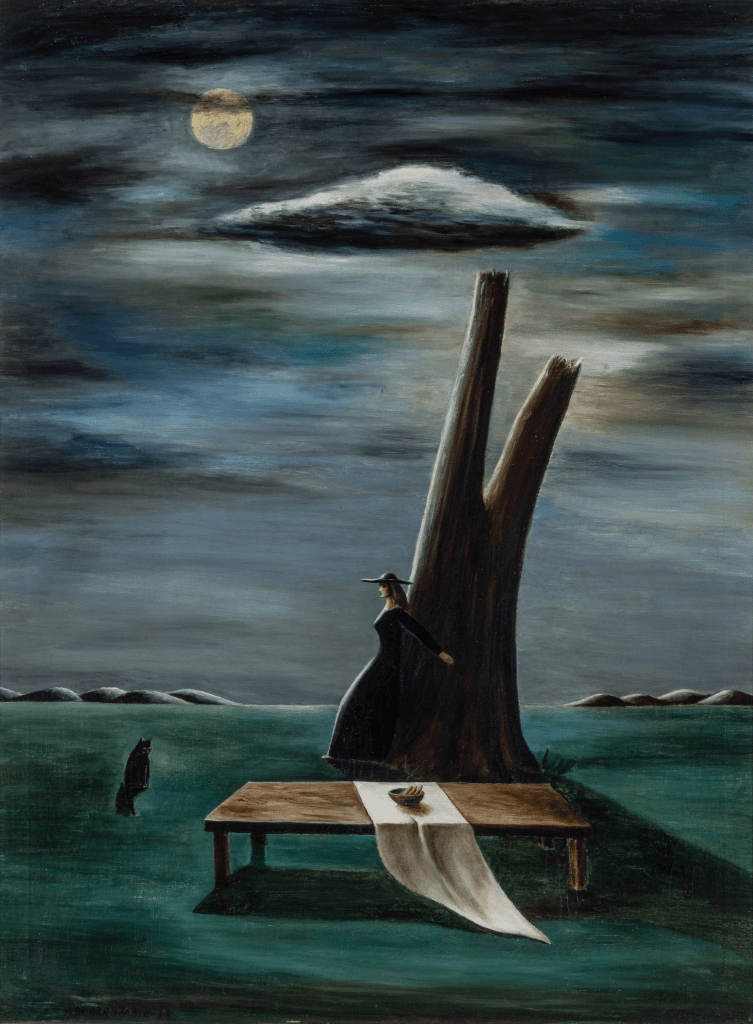
Contributed by David Carrier / Gertrude Abercrombie (1909–1977) was a Chicago-based painter. Basically self-taught, she was inspired by Rene Magritte or perhaps Paul Delvaux to create small, highly distinctive Surrealist paintings. She was a great friend of jazz musicians and much written about by Chicago writers. She had real success in the local art market. Though gone for almost 50 years now, she has recently gained wider attention. In a deft exercise in revisionist taste, Pittsburgh’s Carnegie Museum of Art has mounted a substantial and intriguing display of her work.
In earlier paintings and some later ones, Abercrombie’s motif is often an expressionless woman, standing or sitting and usually isolated in a landscape, though sometimes indoors. It’s as if she is about to perform. But only rarely are human relationships explored. In Tree, Table and Cat (1937), the woman stands by a tree. In White Cat (1938), there is a cat in corner of room, a bowl on the table, and a landscape painting on the wall. In The Stroll (1943), the woman is strolling with a cat. And in Out in the Country (1938), she is reclining in a landscape. The Courtship (1949) is an exception, depicting a man and a woman. In what appears a singularly ill-fated courtship, though, they look no happier than her single women.
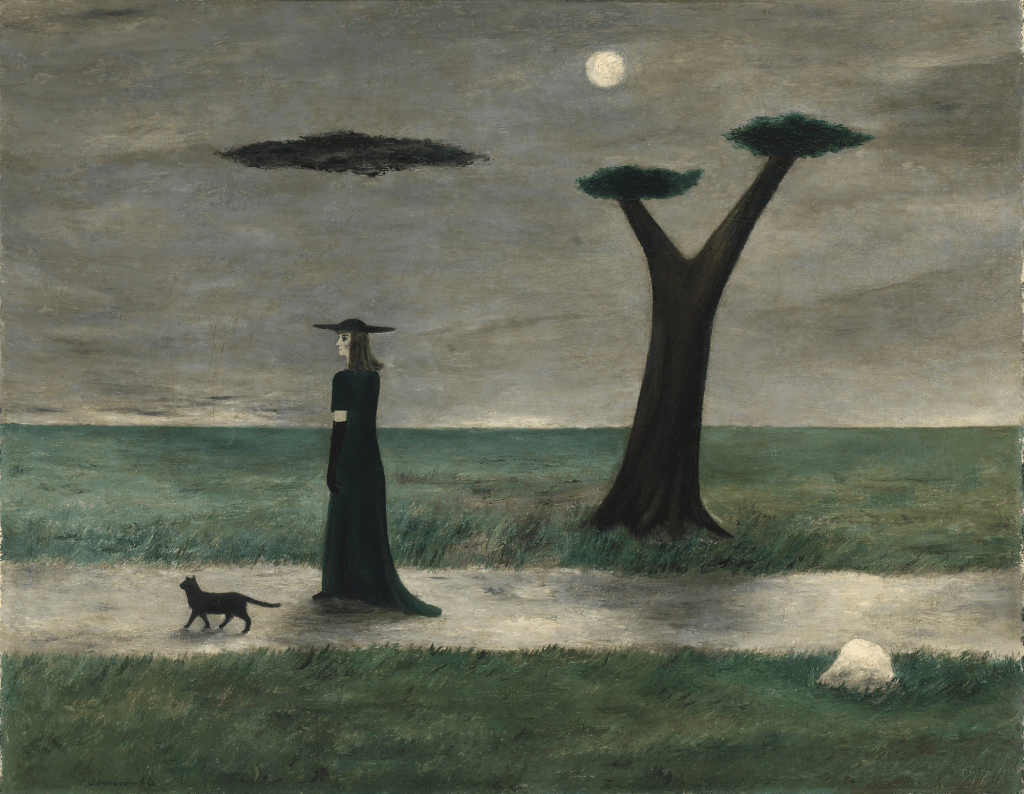
Sometimes, Abercrombie presents just a collection of objects. Eggs and Dominoes (1954) is a good example, as is Coffee Mill (1965), which also depicts a hardboiled egg. These improbable combinations of things convey malaise – Abercrombie’s main theme, of which she is a master. She is also, paradoxically, a painter of emptiness, as in the admirable White Cat (1939). But she doesn’t always recognize her own strengths. Despite admirable intentions, Charlie Parker’s Favorite Painting (1946), a political piece in which a noose hangs from a tree, is too on-the-nose to be completely successful. Similarly, A Picture in a Picture in a Picture (1955) is a little too clever in its allusion to Magritte. Abercrombie’s best works haunt without being too explicit: you see that there is something strange happening without quite knowing what. The Stroll (1947) conjures an entire world from minimal visual ingredients. The same goes for Letter from Karl (1940), which features an unopened letter on a blue tablecloth, and the arrestingly literal Head on a Plate with Cat (1936), which is only referenced in the catalogue.
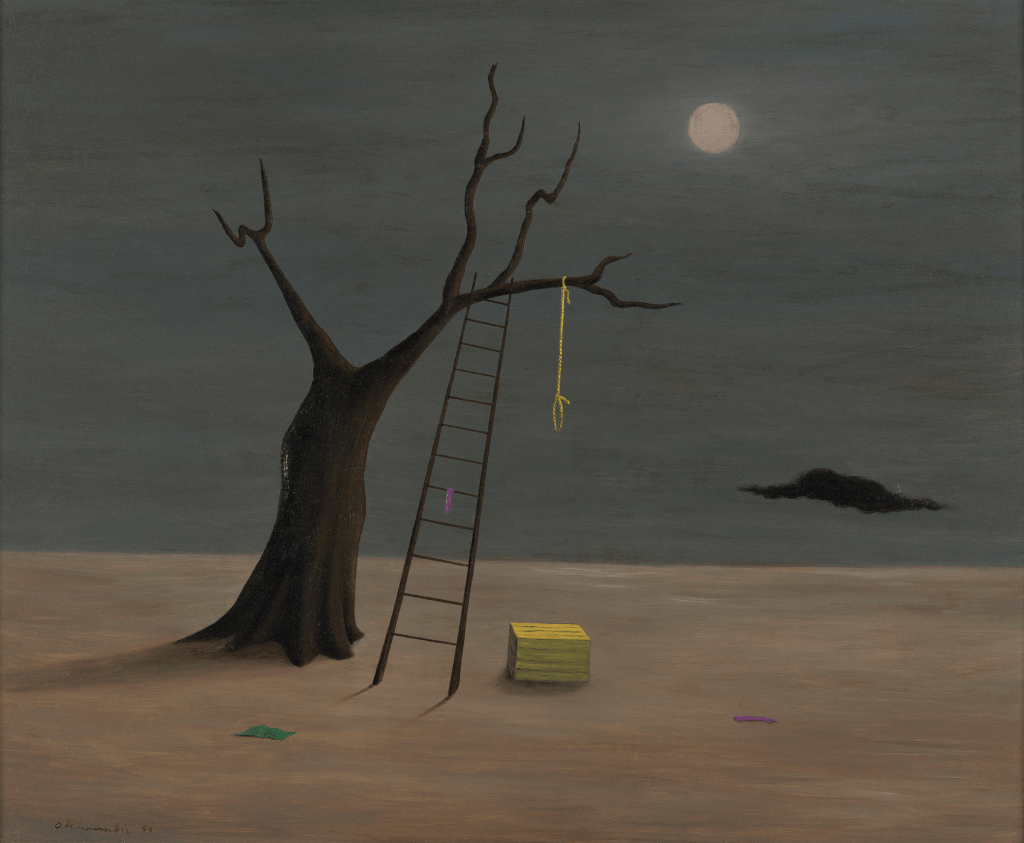
One of the greatest challenges for an art writer is responding constructively to works that seem alien. That was my feeling about Abercrombie. Her work is varied and original, yet it simply left me cold. I was worried that I was missing something. Then I reread the catalogue essay by Eric Crosby, the museum’s director. He expresses genuine awe of “Abercrombie’s commitment to the complexity of self-discovery, her dedication to the liberatory power of artistic expression, her unabashed insistence on nonnormative visual languages, and her openhearted advocacy for a diverse chosen family of artists.” I still find the last phrase enigmatic, but he did manage to open my eyes. However foreign her world is to me, Abercrombie is an authentic if perhaps narrowly-gauged talent and a deeply original visual thinker. She seems a distinctly strange artist for the American Midwest to have produced. The exhibition title is just perfect. For her, the whole world is a mystery. That, I suppose, I can understand after all.
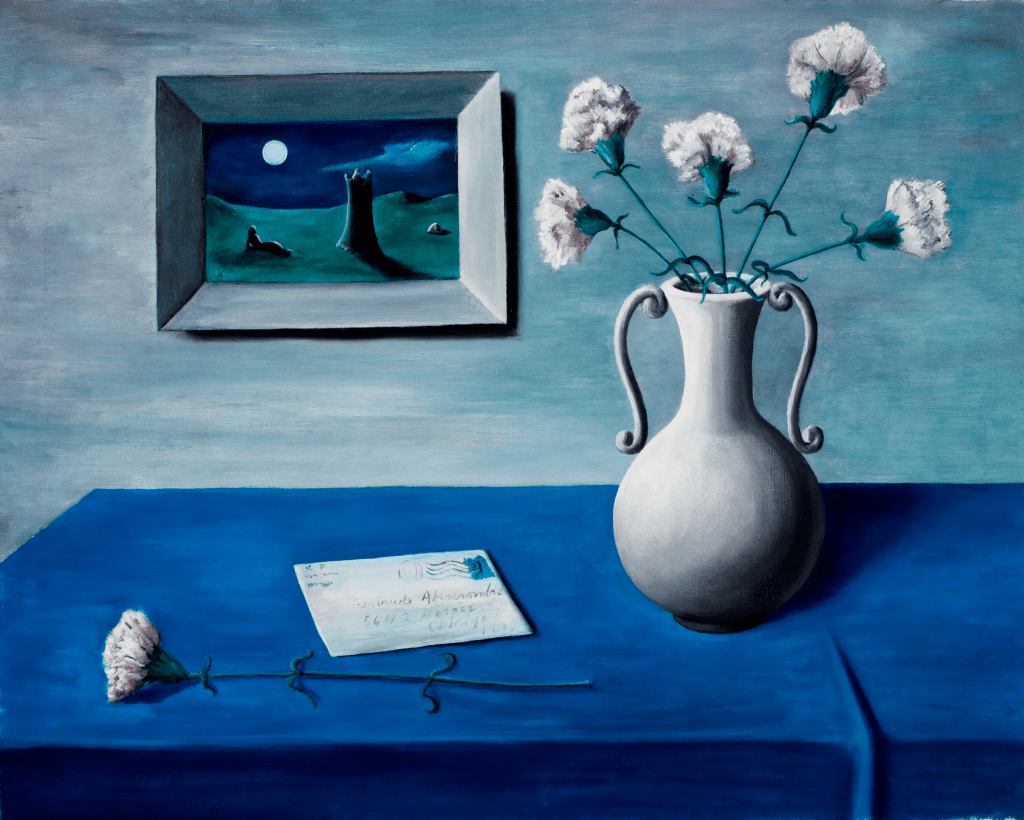
“Gertrude Abercrombie. The Whole World is a Mystery,” The Carnegie Museum of Art, 4400 Forbes Avenue, Pittsburgh, PA. Through June 1, 2025. The show travels to Colby College Museum of Art and Milwaukee Art Museum.
About the author: David Carrier is a former professor at Carnegie Mellon University; Getty Scholar; and Clark Fellow. He has published art criticism in Apollo, artcritical, Artforum, Artus, and Burlington Magazine, and has been a guest editor for The Brooklyn Rail. He is a regular contributor to Two Coats of Paint.

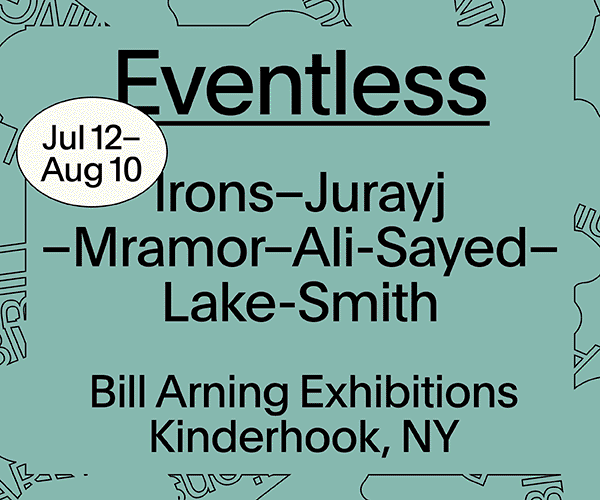
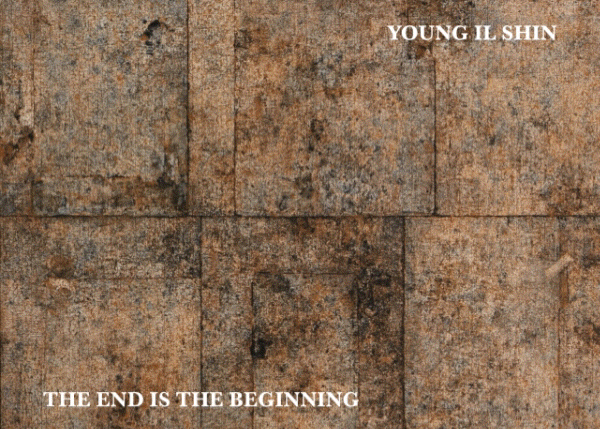
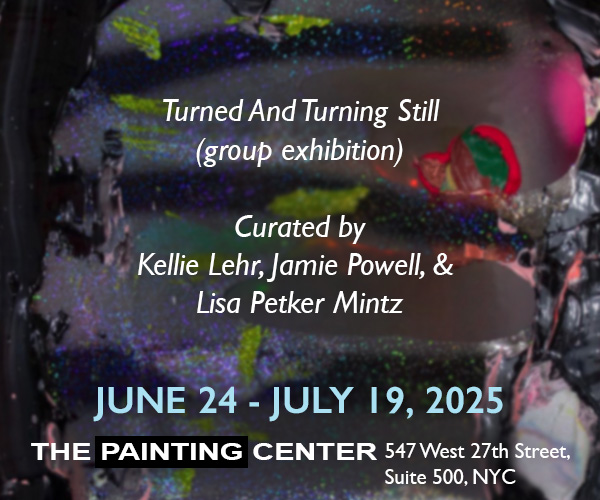
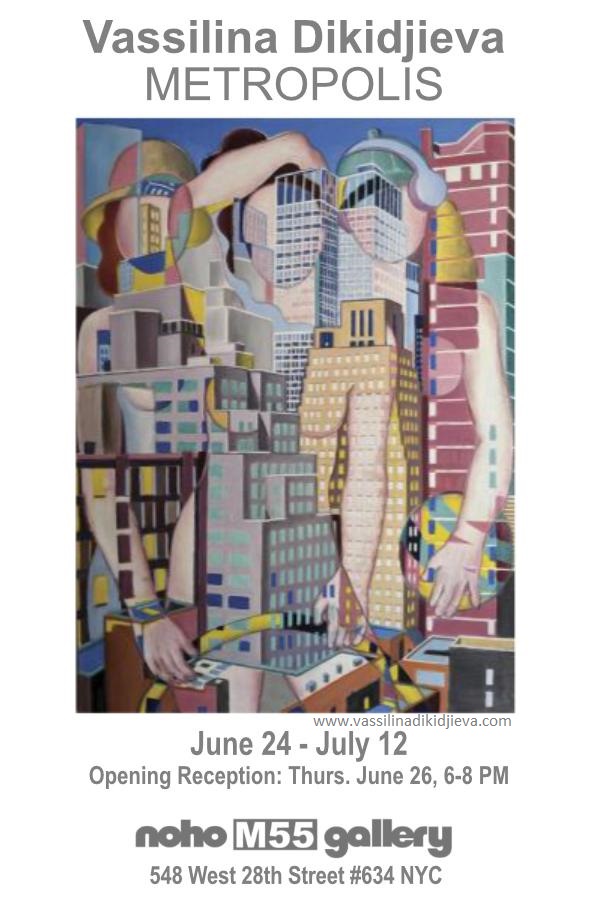
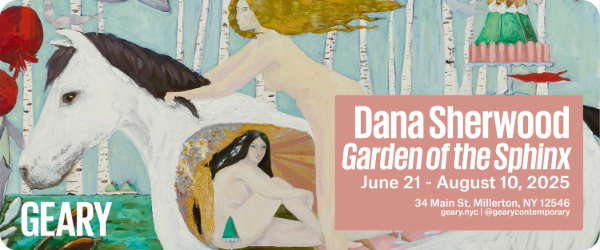










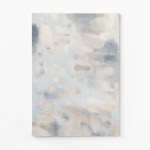
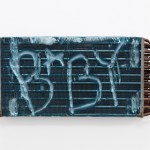
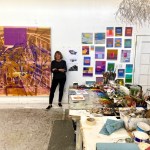
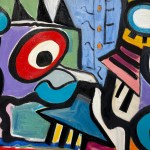
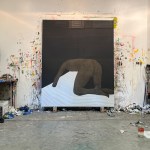
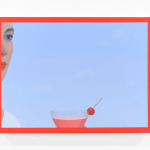
An artist whose work I haven’t fully explored until recently, but her reemergence into the art world is nothing short of spectacular. I view her work as a powerful compilation of signifiers that allude to an ominous world. The dark and gloomy color palette she often uses creates a mystical, ethereal atmosphere that really resonates with me.